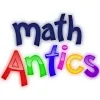Take a look inside 7 images
Math Antics
Pros: The concepts covered and the supporting materials provided are great and highly useful to any teacher or parent.
Cons: Though the video instructor tries hard, he may come across as a bit too goofy to students, and the "talking head and graphics" format might get boring.
Bottom Line: Math videos and resources explain concepts very well, but be prepared for a few student groans along the way.
All of the videos on Math Antics are available for free and are great for introducing or reinforcing math concepts for students. They can be used as a whole-class introduction to a lesson or with individual students who may be struggling with certain skills. The other resources (exercise handouts, explanation videos, worksheets, and answer keys) make it easy for teachers to incorporate the videos into their lessons. These resources are available for free for some lessons, but most are accessible only with a $20-per-year subscription.
Math Antics is a site that provides videos and supplementary materials covering five math topics: arithmetic, fractions, geometry, percents, and algebra basics. Through the free videos, the instructor (Rob) illustrates each concept with detailed, step-by-step explanations and graphics describing how things work. Many of the videos build upon previous concepts and encourage students to "go back a step" to a previous video if needed.
Some of the extra materials are free, but most require a $20-per-year subscription. Printables include one-page exercises that briefly cover a topic and worksheets that provide more focused practice. In addition, example videos explain problems step by step, and answer keys to the printed materials are provided. The materials aren't formally linked to any set curriculum or the Common Core State Standards; they're instead meant to supplement what a student is learning in class and not replace it.
In terms of presenting information clearly and building upon concepts, Math Antics' videos and resources do a fantastic job. They're also helpful for teachers or parents wishing to build their own skills. For a student being first introduced to the ideas or needing extra help, the materials are laid out well and take students step by step through the problems.
The drawback to these videos is that they feature a "talking head" and floating graphics, which can get boring for students upon multiple viewings. Each video also comes in at an average of 10 minutes, which may be too long for younger students. The videos have a bit of a cheesy flavor that may go over really well with some students and may induce groans in others.















